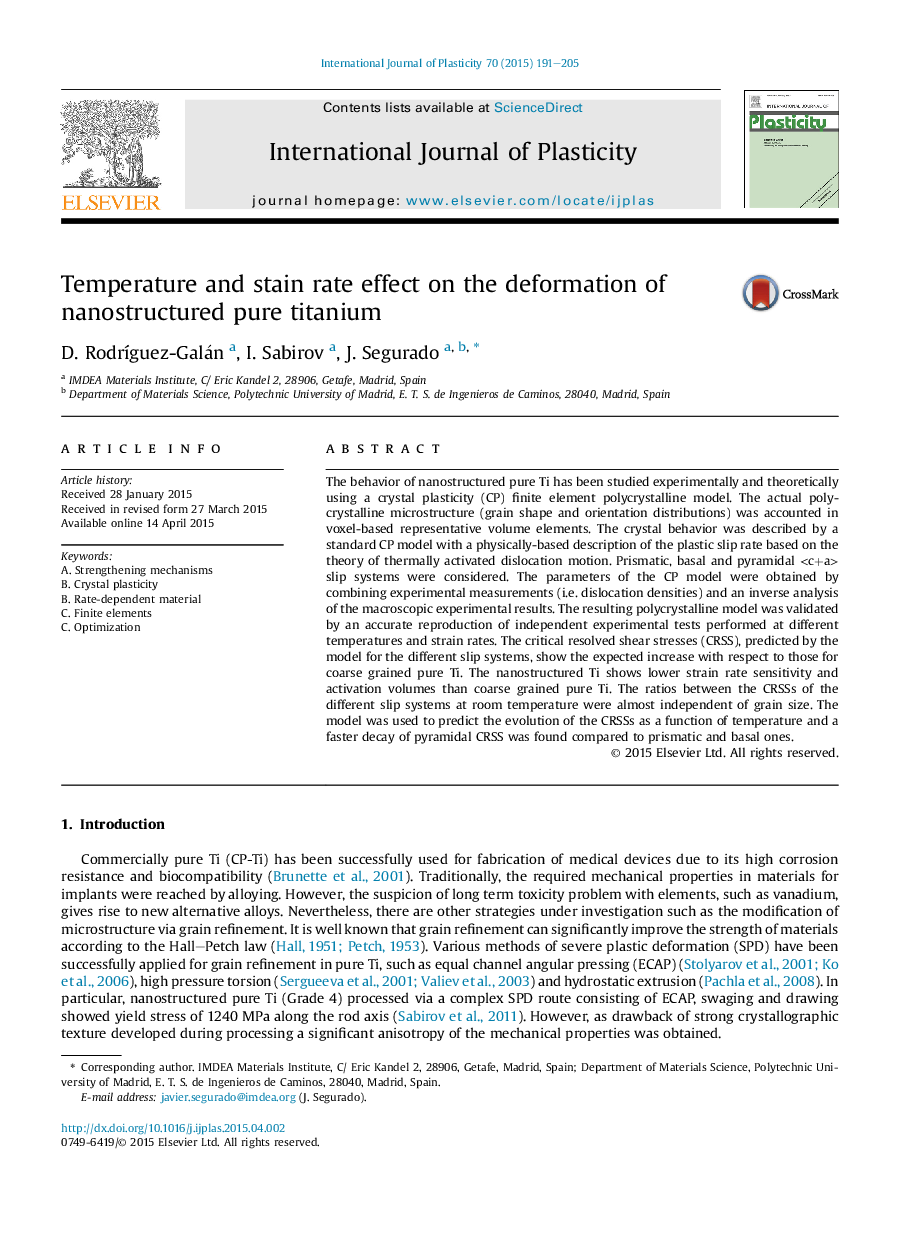| Article ID | Journal | Published Year | Pages | File Type |
|---|---|---|---|---|
| 786611 | International Journal of Plasticity | 2015 | 15 Pages |
•Nanostructured Ti has been studied with a physically inspired CP model.•The model was validated with independent experimental tests.•The evolution with temperature of the different CRSSs was obtained.•The strain rate sensitivity decreased for the nano crystalline material.•The nanostructured Ti showed lower activation volumes than coarse grained Ti.
The behavior of nanostructured pure Ti has been studied experimentally and theoretically using a crystal plasticity (CP) finite element polycrystalline model. The actual polycrystalline microstructure (grain shape and orientation distributions) was accounted in voxel-based representative volume elements. The crystal behavior was described by a standard CP model with a physically-based description of the plastic slip rate based on the theory of thermally activated dislocation motion. Prismatic, basal and pyramidal
